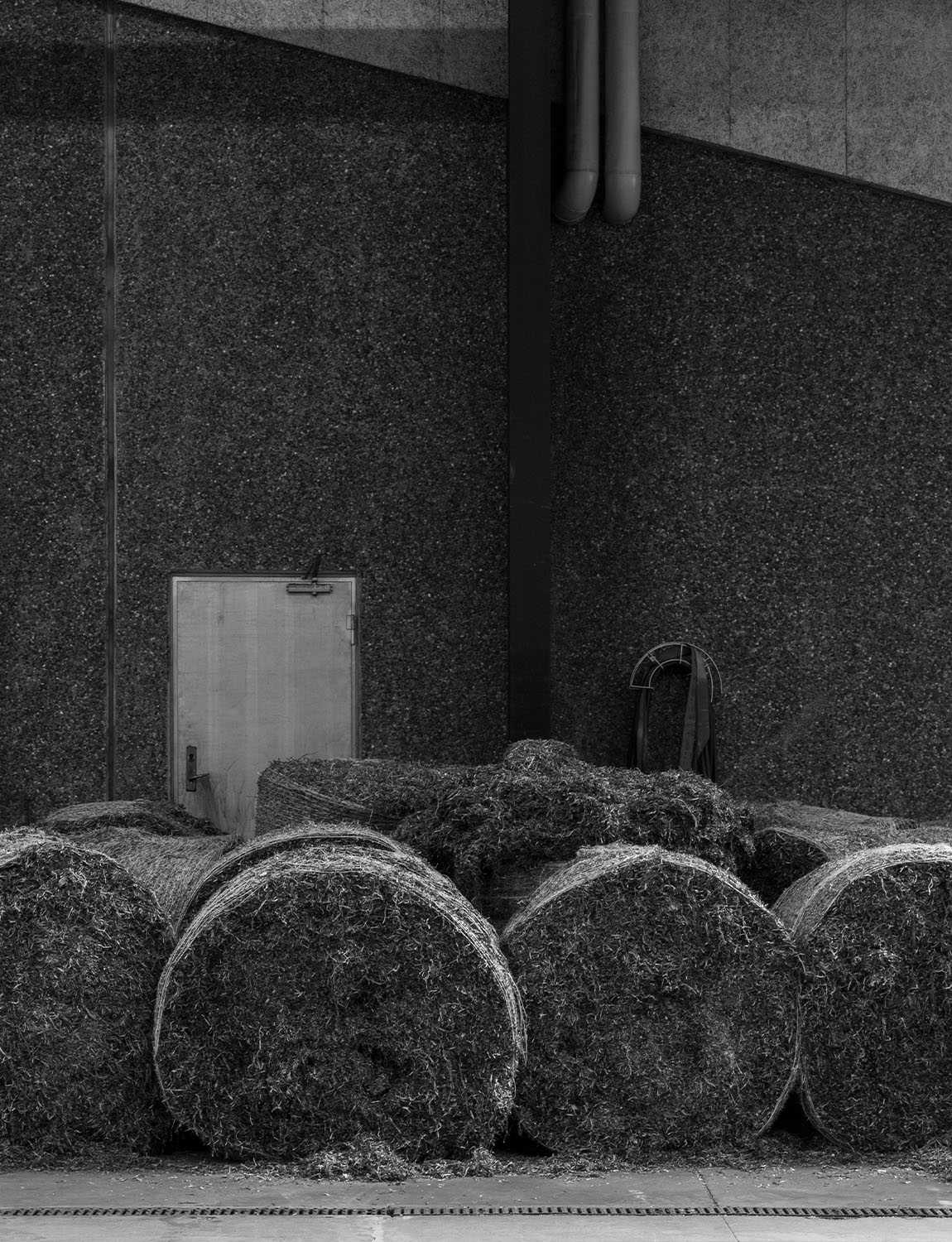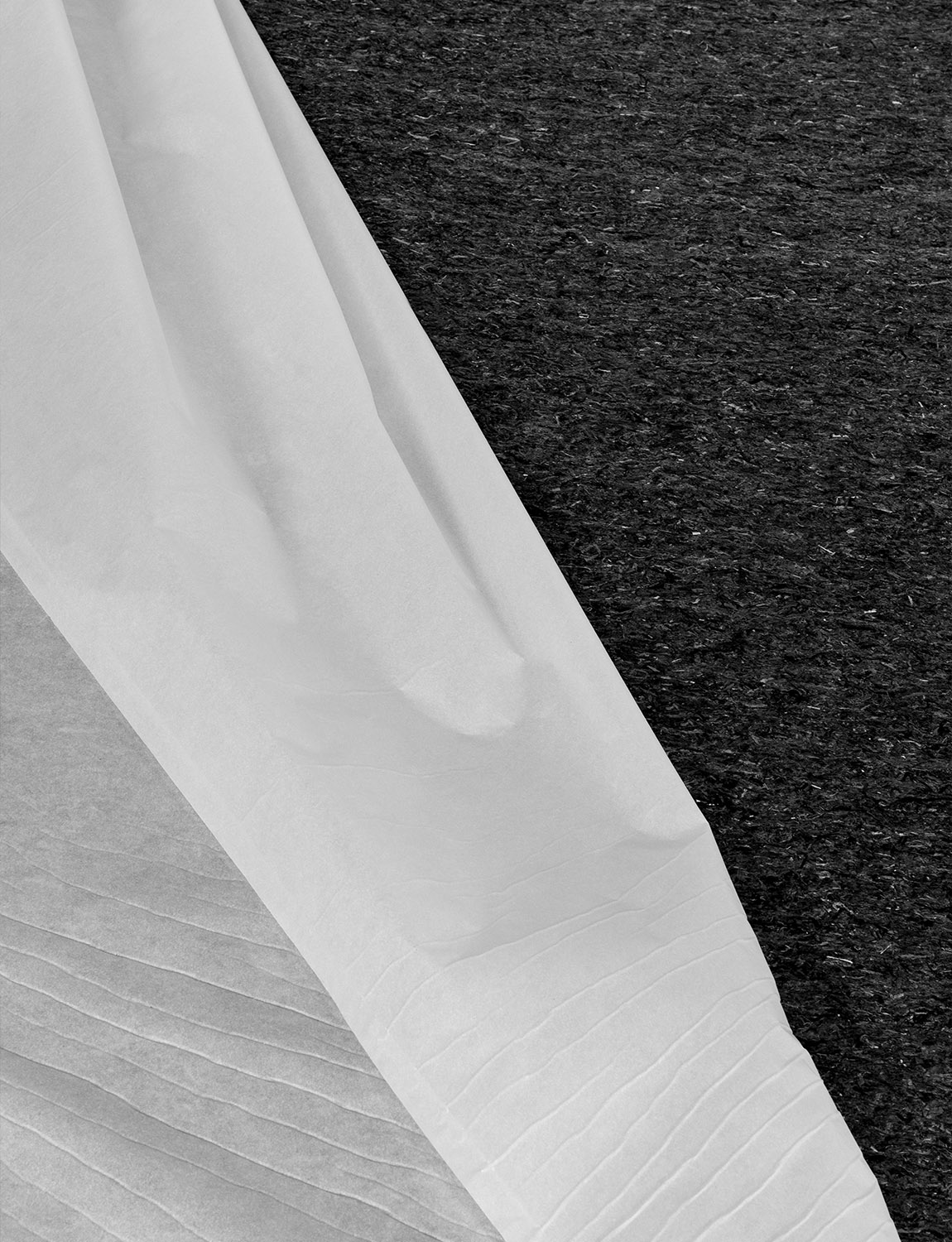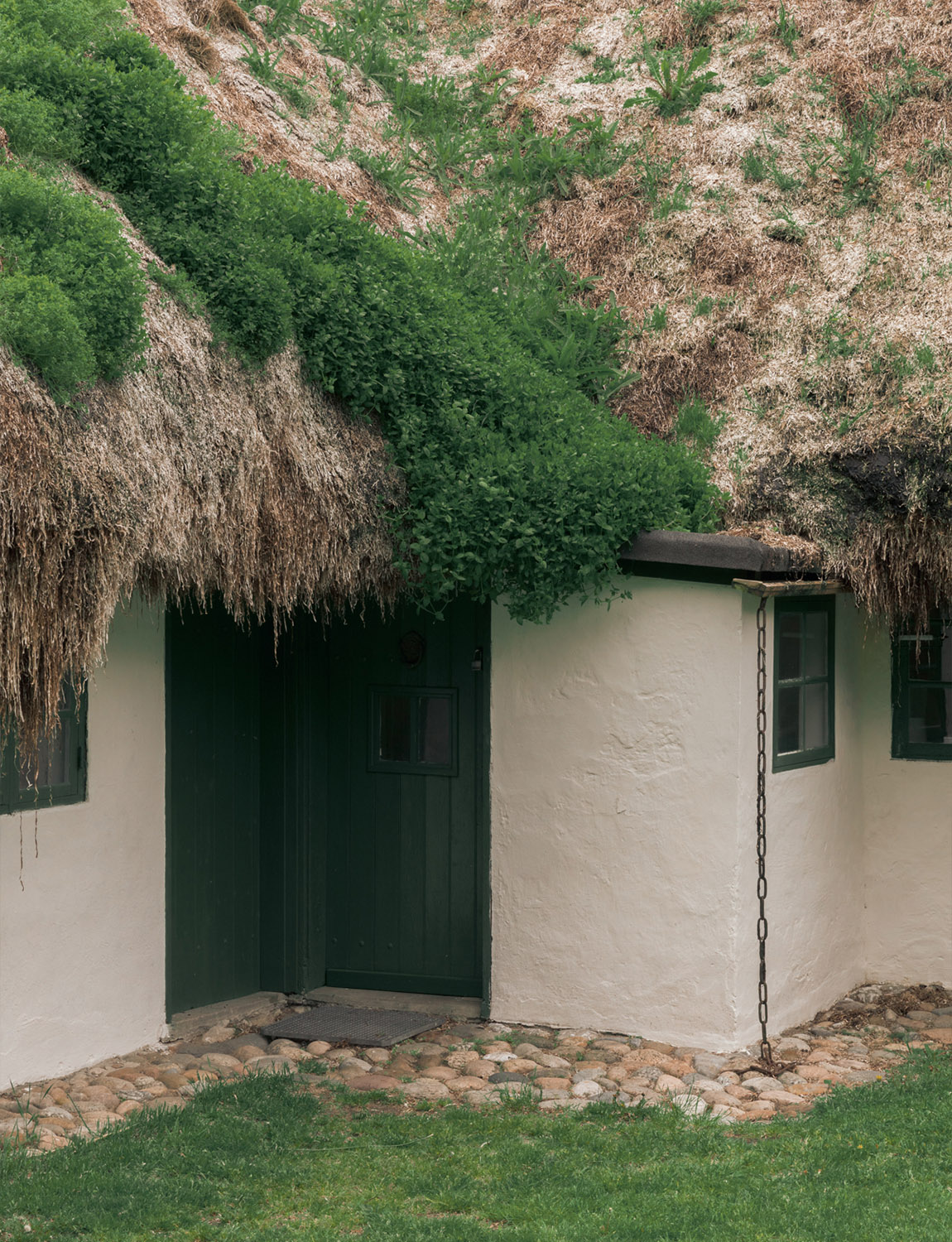Material
Søuld’s eelgrass products originate from the sea—a place you are never far from in Søuld’s native Denmark. The organic material embodies the same sense of calm provided by the sea and when taken indoors, it imbues living spaces with a restorative connection to nature.
AN OVERLOOKED RESOURCE — Eelgrass’s use in construction dates back to the 1600’s, when settlers of Læsø island would forge thick roof-thatching for their ‘seaweed houses’—a technique unseen anywhere else in the world. Enhanced through state-of-the-art technology, Søuld’s work represents a passionate reinvention of Denmark’s forgotten seaweed house heritage.
After a decade of research and development into the material, Søuld has emerged as an expert in eelgrass and is the first company to convert the material into carbon-storing materials (see full EPD here) that combine high acoustic performance, safety and durability with modern aesthetics. Working together with local farmers, municipalities and ecologists, Søuld has optimized eelgrass collection based on environmental protection and the preservation of natural eelgrass meadows.
The carbon-binding sea plant is found washed ashore along Denmark’s coastline as an abundant, renewable and overlooked local resource. The plant absorbs significant amounts of carbon while growing in the sea and therefore serves as a carbon storage when used in construction. (see full EPD here)
Søuld has demonstrated that this natural and carbon-binding material has numerous inherent qualities as a modern building material: it provides excellent acoustic and thermal comfort, effective humidity regulation, long-term durability, high fire-resistance and low susceptibility to mould and bacteria due to its naturally high content of mineral salts.
Production
To unlock the benefits of eelgrass, Søuld has spent over five years devising manufacturing processes that merge nature with state-of-the-art technology, and has built a local community of dedicated eelgrass suppliers.
OUR PROCESS — Søuld has established the optimal formula to produce eelgrass mats at an industrial level and deliver products that meet market needs.
Søuld’s products are manufactured in Denmark through close, long-standing relationships with local partners. We collaborate with independent institutes and certification authorities to test and ensure that our producers meet the highest standards with respect to toxic emissions.
Søuld’s products and processes are designed to be fully circular and with focus on environmental impact. We take environmental protection and the health of producers and customers seriously. Therefore, we expect all of our production partners and suppliers to meet the same commitments as our own team, and we provide full transparency about our materials, processes and product life-cycle. See our full EPD here
1
1. SOURCING — Eelgrass is a natural resource which reproduces itself annually in the sea, washes ashore without any human intervention, and is dried on nearby fields by the sun and wind. Working closely with our community of farmers in Denmark as well as local municipalities and ecologists, Søuld has developed a responsible approach to eelgrass collection based on environmental protection and the preservation of eelgrass meadows. Our sourcing practices also sustain the age-old eelgrass trade and empower local businesses.
Sourcing
Airlaid
2. AIRLAID — At Søuld’s Danish production facility, the eelgrass is analyzed, sorted and classified according to colour and quality, then shredded down to shorter standardized fibres to ensure the best aesthetic and mechanical properties. Initially, the shredded fibres are impregnated with a natural, non-toxic flame retardant and mixed with a binder specially designed for cellulose fibres and recyclability. The blended fibres are then formed into eelgrass batts using airlaid technology.
2
3
3. COMPRESSION — After the fibres are formed into eelgrass batts, they are compressed into mats using a process which balances a low temperature with high compression. The mats are then ready to be cut. Standard sizes are offered at 600 x 1100mm, or the mats can be fully customized to suit any project, with sizes up to 3000 x 1100mm. The finished mats are then ready for easy installation onto interior walls or ceilings.
Compression

Circularity
4. CIRCULARITY — Søuld’s products are designed for circularity. When they reach their end-of-life after many years of use, they can be returned to the factory, re-shredded and either blended into standard products or used to create a base for second-generation Søuld materials. This process ensures the products’ sustainability throughout the entire life-cycle. Søuld products that are not returned to the factory can be sent for combustion at heating plants.
4
5
5. QUALITY CONTROL — We work closely with our local production partners to maintain full control at every step of the process from each component to the final product. The Søuld team are enthusiastic developers and we constantly strive to improve our processes and the aesthetic and functional properties of our mats to make them the best sustainable option for interior spaces.
Quality Control
Transparency
6. TRANSPARENCY — Our materials are responsibly sourced and produced in Denmark according to the highest local environmental standards and industry certifications. We collaborate with partners, test institutes and certification authorities to verify data about the materials we use, our processes and product life-cycle, and to provide transparent results. We strive unceasingly to develop sustainable products of high quality and always search for the best solutions to improve the environmental accounting of our production and products. See our full EPD here
6

History
Søuld’s eelgrass products are the result of a passionate reinvention of a 400-year-old Danish tradition that casts an ancient material in a new, modern light.
MATERIAL HISTORY — During the 1600’s, on the remote Danish island of Læsø, locals developed an ingenious building solution. In a landscape with scarce resources, Læsø’s settlers turned to the salty seas where the eelgrass plant grew in a soft underwater fringe that drifted ashore after autumnal storms. Thanks to the water’s high salt content, the eelgrass thrived in this otherwise desolate climate and offered an easily accessible, free and abundant material for the growing population of salt makers and fishermen to shelter their homes with.
While the men were fishing out at sea, the roofs were built by women who resourcefully applied their weaving skills to construct the eelgrass thatching. Driftwood salvaged from shipwrecks was used as timber and the eelgrass was collected from the shores, harvested, dried and woven to form thatching. Due to the natural salt impregnation of the timber and eelgrass, the roofing would resist decay and survive for hundreds of years. The performance of the roofing improved with age as the eelgrass solidified into a solid mass that was waterproof, fireproof, and insulating.
By the beginning of the 20th Century, most Læsø homes were thatched using eelgrass—amassing around 250 examples of this natural ‘seaweed house’ technique. During the 1930’s the tradition was abandoned due to changing construction demands, and eelgrass was forgotten until recently when a community of local craftspeople uncovered it. The group carried out experiments with Danish farmers from Møn and Bogø, learning how to collect and dry the fresh eelgrass to obtain the desirable qualities.
In 2009, a team of ecological entrepreneurs partnered with philanthropists and The National Museum, The Danish Heritage Agency and The Realdania Foundation to establish Læsø Tangbank—a project dedicated to the restoration and protection of the remaining 36 seaweed houses and to the renewal of the eelgrass material trade the houses rely upon.
Through their work, Læsø Tangbank unearthed a rich archive of building methods, worked closely with local farmers to develop efficient eelgrass harvesting and manufacturing methods, and raised awareness of the material’s excellent building properties. In 2016 Læsø Tangbank became Søuld, which now operates with a decade of expertise in eelgrass and a deep commitment to its potential in sustainable construction.
Today Søuld is focussed on enhancing and modernizing the time-honoured eelgrass material through state-of-the-art science and technology, while preserving an important aspect of Danish cultural heritage. Søuld is on a mission to re-introduce the remarkable but overlooked material at a time when low-carbon building solutions are vital for the preservation of the environment. Over the years, Søuld has revived Denmark’s old tradition of harvesting and drying eelgrass, developed practices to safeguard the eelgrass ecosystem and the continuous preservation of this natural resource. Søuld has built a growing network of specialized eelgrass suppliers and optimized the raw material production to ensure high quality and performance.
Søuld
Follow us
Instagram
LinkedIn
Facebook
Newsletter
© Søuld. All Rights Reserved.
Follow us
Instagram
LinkedIn
Facebook
Newsletter
© Søuld. All Rights Reserved.












